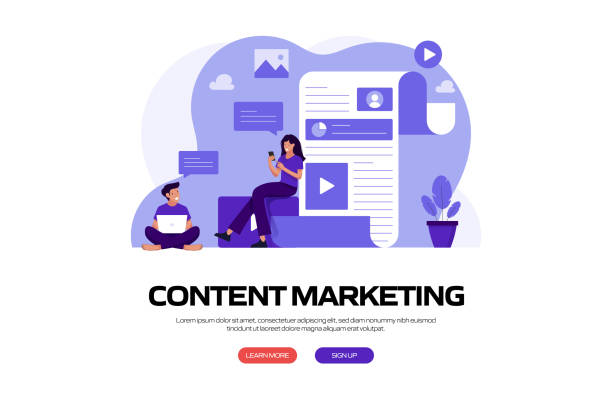Lead generation is an essential part of any marketing strategy. It is about identifying and attracting potential customers for a company’s products or services. Lead generation is essential for businesses of all sizes, and it has become increasingly important in the digital age. In this comprehensive guide, we’ll explore and provide ideas on how to maximize your marketing efforts through effective lead generation.
Understanding lead generation
Lead generation is the process of attracting and converting strangers into people who have expressed an interest in your company’s products or services. The goal is to generate leads that can be nurtured and eventually turned into customers. Lead generation is an essential aspect of the sales funnel and helps companies identify potential customers interested in their products or services.
The importance of lead generation for businesses
Lead generation is essential for businesses of all sizes. It allows companies to identify potential customers and collect their information. This information can then be used to develop targeted marketing campaigns, resulting in better conversion rates and increased revenue. Lead generation also helps companies build relationships with potential customers, which can lead to long-term loyalty and business renewal.
Types of lead generation tactics
There are several types of lead generation tactics that businesses can use to attract potential customers. These tactics are:
Content Marketing
Content marketing is about creating and sharing valuable content to attract and retain potential customers. This content may include blog posts, e-books, videos, and social media posts. The goal is to bring value to potential customers and make the company an authority in its industry.
Email Marketing
Email marketing is the sending of targeted email campaigns to potential customers. This tactic is especially effective when combined with other lead generation tactics , such as content marketing. Email campaigns can be used to nurture leads and move them up the sales funnel.
Social Media Marketing
Social media marketing is the use of social media platforms to attract potential customers. This tactic can be especially effective for businesses that have a strong presence on social media platforms. Social media marketing can be used to engage with potential customers, build relationships, and drive traffic to a business’s website.
Search Engine Optimization (SEO)
Search engine optimization is the process of optimizing a website to rank higher in search engine results pages (SERPs). This tactic can be especially effective for businesses that rely on search engine traffic. SEO can be used to attract potential customers who are actively looking for products or services related to the company’s industry.
Lead generation statistics
Lead generation is an essential aspect of any marketing strategy, and the stats speak for themselves. Here are some key statistics on the importance of lead generation:
- Companies that excel at nurturing leads generate 50% more sales-ready leads, for 33% less cost.
- 80% of marketers say their lead generation efforts are only marginally effective or not effective.
- 61% of marketers say generating traffic and leads is their biggest challenge.
- 68% of companies say improving lead quality is a top priority.
The lead generation process
The lead generation process includes several steps that businesses can take to attract and convert potential customers. Here are the steps of the lead generation process:
Step 1: Identify your target audience
The first step in the lead generation process is to identify your target audience. It’s about understanding the demographics, interests, and pain points of your potential customers. By understanding your target audience, you can create targeted marketing campaigns that are more likely to resonate with them.
Step 2: Create valuable content
The next step is to create valuable content that will attract potential customers. These can be blog posts, e-books, videos, and social media posts. The goal is to bring value to potential customers and make your business an authority in its industry.
Step 3: Promote your content
Once you have created valuable content, the next step is to promote it. This can be done through social media, email marketing, and other channels. The goal is to present your content to as many potential customers as possible.
Step 4: Capture leads
The next step is to capture potential customers. It’s about getting potential customers to provide their contact information in exchange for access to your content. You can do this by using landing pages, forms, and other lead capture tools.
Step 5: Nurture potential customers
Once you’ve captured leads, the next step is to nurture them. It’s about providing them with additional valuable content and moving them up the sales funnel. The goal is to build a relationship with potential customers and turn them into paying customers.
Step 6: Convert potential customers
The final step in the lead generation process is to convert leads into paying customers. This can be done through targeted marketing campaigns, sales calls, and other tactics.
Create a lead generation plan
Creating a lead generation plan is essential to the success of any marketing strategy. This plan outlines the steps a business will take to attract and convert potential customers. Here are the steps for creating a lead generation plan:
Step 1: Set Goals
The first step in developing a lead generation plan is to set goals. It’s about understanding what you want to achieve from your lead generation efforts. Your goals should be specific, measurable, achievable, relevant and time-bound (SMART).
Step 2: Identify your target audience
The next step is to identify your target audience. It’s about understanding the demographics, interests, and pain points of your potential customers.
Step 3: Choose Lead Generation Tactics
Once you have identified your target audience, the next step is to choose your lead generation tactics. It can be content marketing, email marketing, social media marketing and SEO.
Step 4: Develop your content strategy
The next step is to develop your content strategy. It’s about creating valuable content that resonates with your target audience.
Step 5: Create your lead capture tools
The next step is to create your lead capture tools. These can include landing pages, forms, and other lead capture tools.
Step 6: Nurture Your Leads
Once potential customers have been captured, the next step is to nurture them. It’s about providing them with additional valuable content and moving them up the sales funnel.
Step 7: Measure and analyze your results
The final step in creating a lead generation plan is to measure and analyze your results. It’s all about tracking your lead generation efforts and making any necessary adjustments.
How to qualify a prospect?
Qualifying a lead involves determining a potential customer’s level of interest and readiness to buy. This can be done through lead scoring, which involves assigning a score to each lead based on their behavior and engagement with your business. Here are some key factors to consider when qualifying a lead:
- Demographics: Consider factors such as job title, company size, and industry to determine if the prospect is a good fit for your business.
- Engagement: Look at the prospect’s behavior, such as website visits, email opens, and social media engagement, to determine their level of interest.
- Budget: Determine if the prospect has the budget to buy your products or services.
- Authority: Determine if the prospect has the power to make buying decisions within their organization.
Lead Generation Best Practices
To maximize your lead generation efforts, it’s essential to follow best practices. Here are some best practices to keep in mind:
- Understand your target audience: To create effective marketing campaigns, it’s essential to understand the demographics, interests, and pain points of your target audience.
- Create valuable content: To attract potential customers, it is essential to create quality content that provides them with actionable information and solutions to their problems.
- Use multiple lead generation tactics: To reach a larger audience, it is essential to use multiple lead generation tactics, such as content marketing, email marketing, social media marketing, and SEO.
- Nurture Your Leads: Key to building relationships with leads is nurturing your leads by providing them with valuable additional content and advancing them through the sales funnel.
- Measure and analyze your results: To improve your lead generation efforts, it is essential to measure and analyze your results and make any necessary adjustments.
Measure and analyze lead generation success
Measuring and analyzing the success of your lead generation efforts is essential to optimizing your marketing strategy. Here are some key metrics to track:
- Conversion rate: The percentage of leads that turn into paying customers.
- Cost per lead: The amount you spend on each lead.
- Lead Quality: The level of interest and readiness to buy from your leads.
- Return on Investment (ROI): The amount of revenue generated versus money spent on lead generation.
6 steps to implement a lead generation strategy
Implementing a lead generation strategy can be a daunting task, but it’s essential to the success of your marketing efforts. Here are six steps to implementing a lead generation strategy:
Step 1: Define your goals
The first step is to define your goals. It’s about understanding what you want to achieve from your lead generation efforts.
Step 2: Identify your target audience
The next step is to identify your target audience. It’s about understanding the demographics, interests, and pain points of your potential customers.
Step 3: Choose Lead Generation Tactics
Once you have identified your target audience, the next step is to choose your lead generation tactics. It can be content marketing, email marketing, social media marketing and SEO.
Step 4: Develop your content strategy
The next step is to develop your content strategy. It’s about creating valuable content that resonates with your target audience.
Step 5: Create your lead capture tools
The next step is to create your lead capture tools. These can include landing pages, forms, and other lead capture tools.
Step 6: Nurture Your Leads
Once potential customers have been captured, the next step is to nurture them. It’s about providing them with additional valuable content and moving them up the sales funnel.
Common Mistakes to Avoid in Lead Generation
Lead generation can be a complex process, and there are several common mistakes companies need to avoid. Here are a few to keep in mind:
- Not understanding your target audience: To create effective marketing campaigns, it’s essential to understand the demographics, interests, and pain points of your target audience.
- Focus on quantity over quality: While attracting a large number of leads is essential, it is equally important to focus on the quality of those leads.
- Not Nurturing Prospects: Key to building relationships with potential customers is nurturing your leads by providing them with valuable additional content and advancing them through the sales funnel.
- Failing to measure and analyze results: To optimize your lead generation efforts, it is essential to measure and analyze your results and make any necessary adjustments.
Tools and resources for lead generation
There are several tools and resources that can help businesses optimize their lead generation efforts. Here are a few :
- Lead Capture Tools: These tools can help businesses capture leads through landing pages, forms, and other lead capture tools.
- Email marketing tools: These tools can help businesses send targeted email campaigns to potential customers.
- Social media management tools: These tools can help businesses manage their social media presence and engage with potential customers.
- SEO tools: These tools can help businesses optimize their website to rank higher in search engine results pages (SERPs).
Conclusion
Lead generation is critical to the success of any marketing strategy. By understanding the lead generation process, creating a lead generation plan, and following best practices, businesses can maximize their marketing efforts and attract potential customers. By measuring and analyzing their results, businesses can optimize their lead generation efforts and achieve their marketing goals. With the right tools and resources, businesses can take their lead generation efforts to the next level and achieve long-term success.
What is lead generation?
What are the benefits of lead generation for businesses?
How to choose the right lead generation channels?
How to create attractive offers for leads?
How to monitor and analyze the results of your lead generation campaigns?
How to maintain the interest of leads over the long term?











